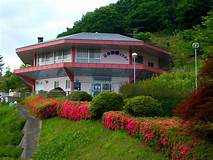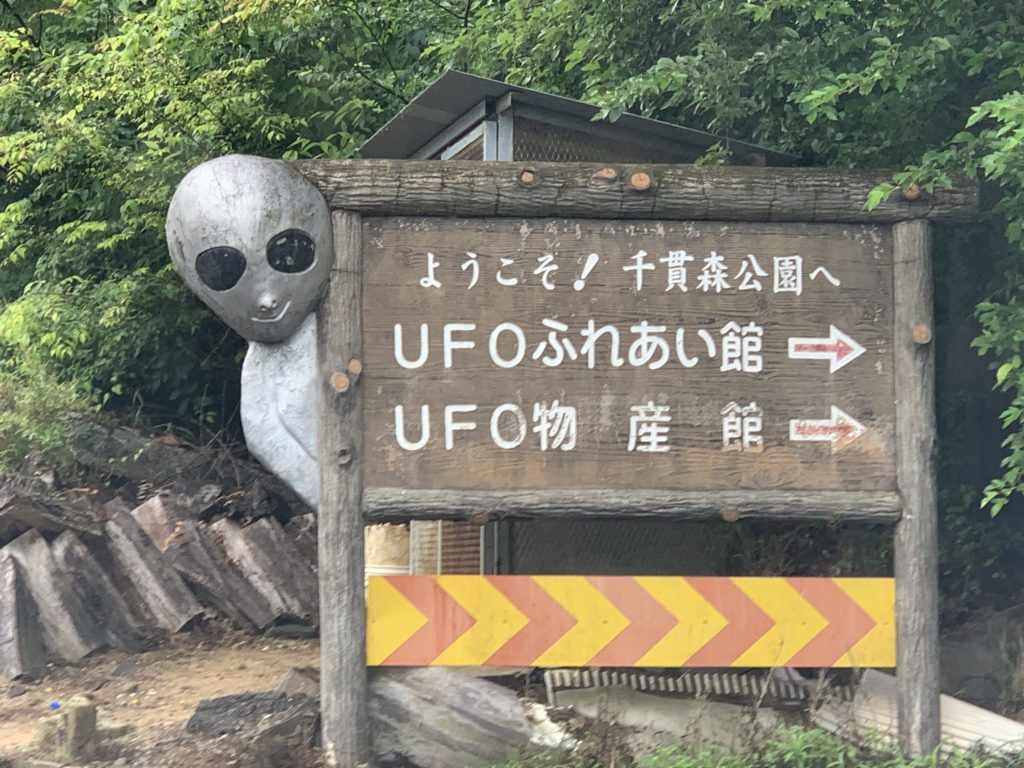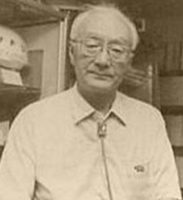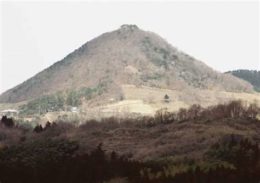by Charles Lear
 On June 24 of this year (World UFO Day), the International UFO Lab was established in Japan. It is housed in the UFO Fureaikan (UFO Friendship Center), a UFO center and museum that was built in 1992 in the town of linomachi (lower case spelling is apparently proper), which is now a prefecture of Fukushima. The facility is city owned and run by the Iinomachi Promotion Corporation. It was built using money from a regional development fund in an effort to help promote the area as a UFO hotspot after numerous sightings, starting in the 1970s, around nearby Mount Senganmori. The Lab is part of a new revitalization effort for Fukushima as a whole. Japan’s history of private UFO research goes back to the 1950s, but the official stance until 2020 was that UFOs weren’t worthy of consideration.
On June 24 of this year (World UFO Day), the International UFO Lab was established in Japan. It is housed in the UFO Fureaikan (UFO Friendship Center), a UFO center and museum that was built in 1992 in the town of linomachi (lower case spelling is apparently proper), which is now a prefecture of Fukushima. The facility is city owned and run by the Iinomachi Promotion Corporation. It was built using money from a regional development fund in an effort to help promote the area as a UFO hotspot after numerous sightings, starting in the 1970s, around nearby Mount Senganmori. The Lab is part of a new revitalization effort for Fukushima as a whole. Japan’s history of private UFO research goes back to the 1950s, but the official stance until 2020 was that UFOs weren’t worthy of consideration.
 The material housed in the UFO Fureaikan comes from a donation of over 3000 items from early Japanese UFO researcher Kinichi Arai. Arai ran a bookstore in the early 1950s and developed an interest in flying saucers while reading books on the subject that were increasingly being published at the time. Arai felt there was need for serious discussion of the phenomenon and formed Japan’s first UFO organization, the Japanese Flying Saucer Research Association in 1955. Arai was a pacifist, and according to him, “I told myself that if we knew for sure that the aliens were watching us, we would no longer fight. Therefore, I decided to see if I could prove that the aliens were real.”
The material housed in the UFO Fureaikan comes from a donation of over 3000 items from early Japanese UFO researcher Kinichi Arai. Arai ran a bookstore in the early 1950s and developed an interest in flying saucers while reading books on the subject that were increasingly being published at the time. Arai felt there was need for serious discussion of the phenomenon and formed Japan’s first UFO organization, the Japanese Flying Saucer Research Association in 1955. Arai was a pacifist, and according to him, “I told myself that if we knew for sure that the aliens were watching us, we would no longer fight. Therefore, I decided to see if I could prove that the aliens were real.”
Something that might be particularly of interest to UFO researchers (and possibly American authorities) is a collection of purported classified UFO-related CIA documents held at the museum. Arai claimed to have gotten them from an American friend who had access. The curators value the documents to the degree that they keep them locked in a vault year round and only display them on World UFO Day.
 The director of the International UFO Lab is Takeharu Mikami, who is the editor of the Japanese fortean magazine Mu. According to him, the lab “will be a research institute that will attract worldwide attention.” He added, “We’d like people to provide us with a lot of information.”
The director of the International UFO Lab is Takeharu Mikami, who is the editor of the Japanese fortean magazine Mu. According to him, the lab “will be a research institute that will attract worldwide attention.” He added, “We’d like people to provide us with a lot of information.”
Part of the lab’s mission is to attract researchers from all over the world to help in the staff’s efforts to shed light on the UFO mystery. There is a website where those interested can apply for membership. Someone could perhaps suggest to Mikami that it might help the lab’s international efforts if the site wasn’t almost entirely in Japanese.
Until recently, Japan had no publicly stated official policy on UFOs. In 2018, Japanese Defense Minister Taro Kono stated that the official view on UFOs was that “no confirmation has been made of their existence,” and that the government had “not considered in any specific manner what will be done should a UFO be sighted flying toward Japan.”
Then, in September of 2020, Kono announced that Japan’s Self Defense Forces would make efforts to record and photograph UFOs and analyze reports from all sources, including the Japanese public. This announcement came after a meeting with U.S. Defense Secretary Mark Esper where the two discussed UFOs as an area where the two countries could cooperate. Just prior to this, in August, the U.S. had announced the creation of a

task force that would “detect, analyze and catalog [unidentified aerial phenomena] that could potentially pose a threat to U.S. national security.”
Besides the IUFOL and the museum exhibits, the UFO Fureaikan offers something else to attract tourists. According to the travel site Japan Journeys, there is a resting room and a bath house on the second floor overlooking “an amazing landscape.” What better way to relax while skywatching?